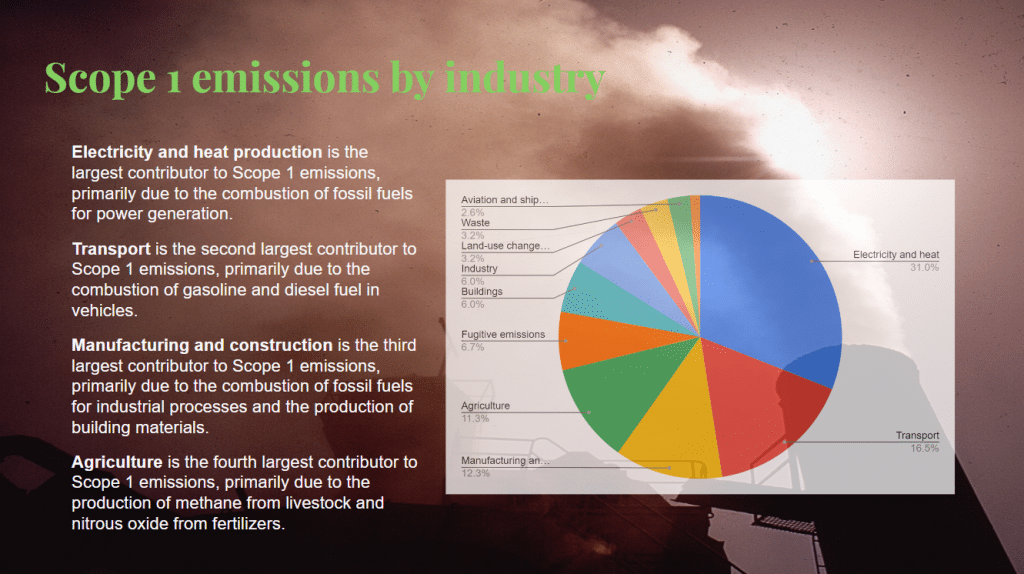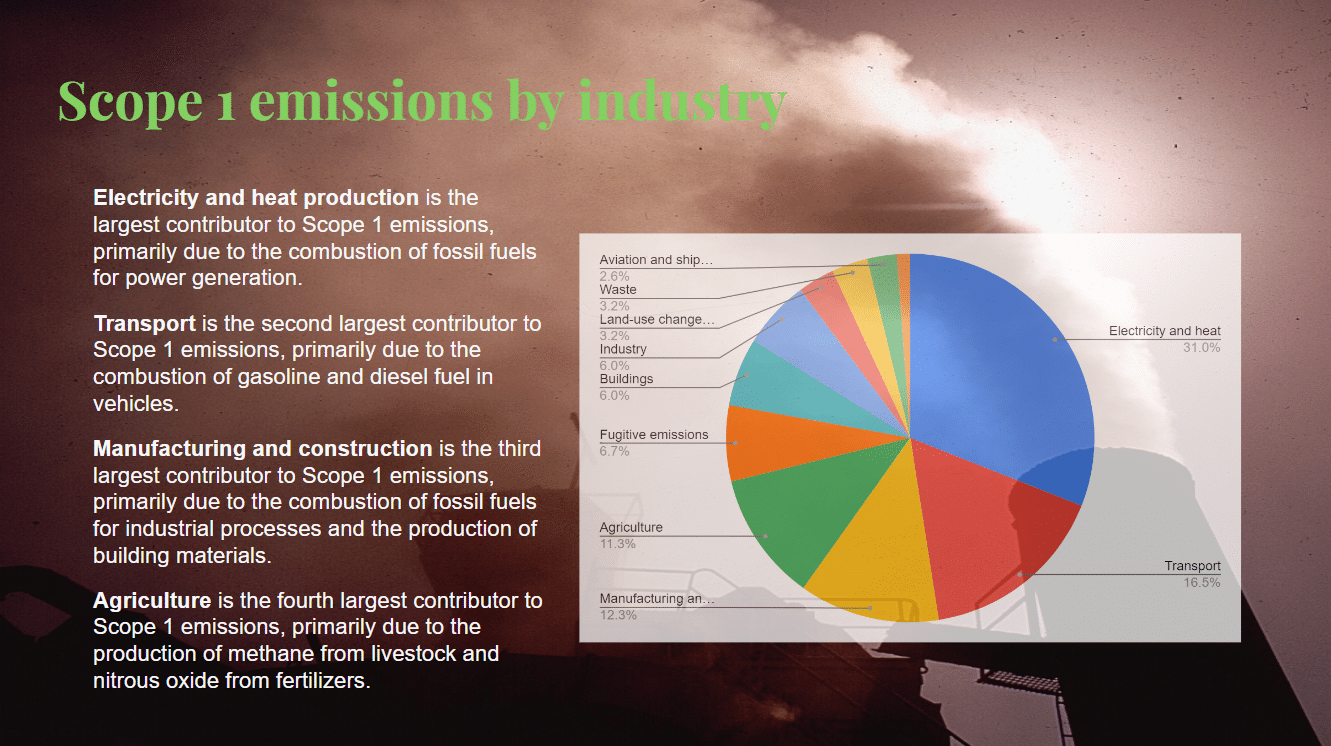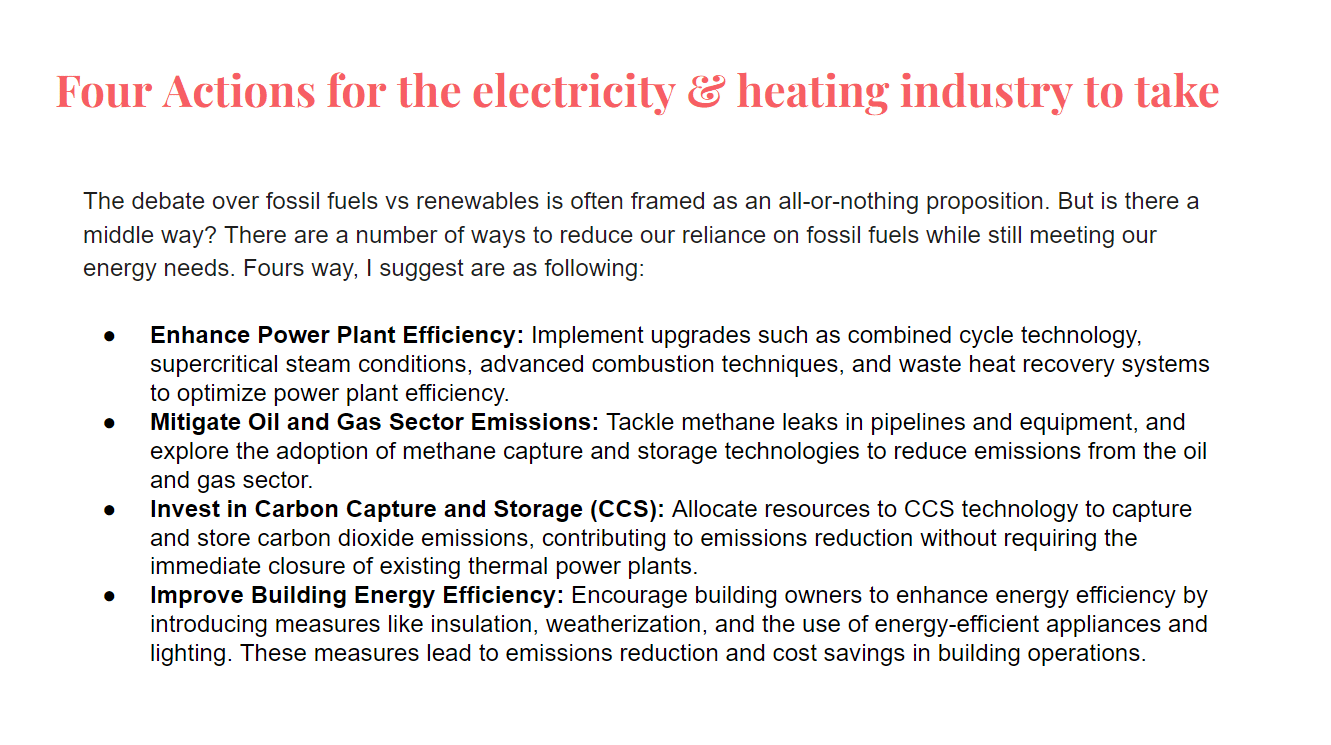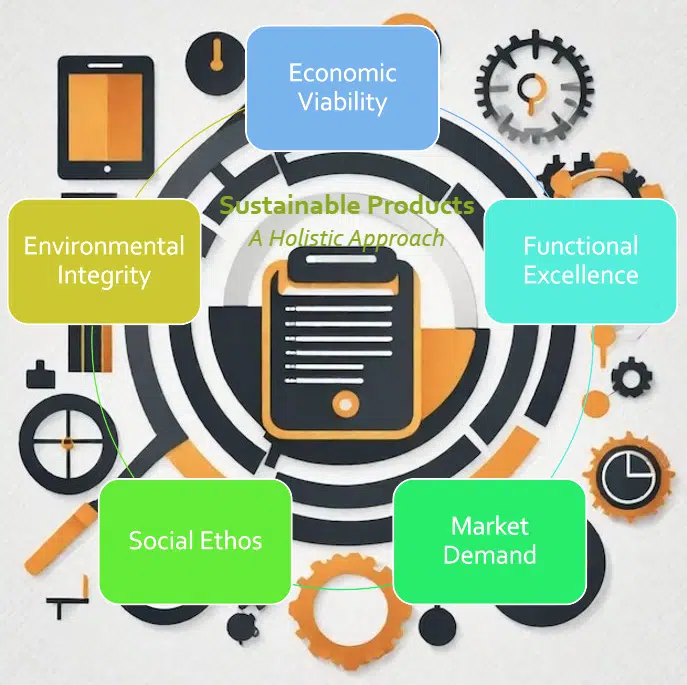Introduction
In the global pursuit of sustainability and combatting climate change, understanding and addressing greenhouse gas emissions is paramount. These emissions are categorized into different scopes, we discussed these emission scopes in our earlier post ‘Understanding Net Zero Emissions and Emission Scopes’. In this blog, we will delve into “Scope 1 emissions” and explore their significance in the broader context of carbon accountability.
What Are Scope 1 Emissions?
Scope 1 emissions are a subset of greenhouse gas emissions that originate directly from sources owned or controlled by an organization. These emissions are sometimes referred to as “direct emissions” and are typically the most straightforward to measure and manage. Key examples include:
- Combustion of Fossil Fuels: Emissions resulting from the burning of fossil fuels within an organization’s facilities, such as natural gas for heating, diesel for backup generators, or gasoline for company-owned vehicles.
- Industrial Processes: Emissions generated during specific industrial activities, such as chemical reactions or emissions from manufacturing processes.
- On-Site Agriculture: Emissions from agricultural activities directly managed by the organization, if applicable.

Why Scope 1 Emissions Matter
Understanding and mitigating is crucial for several reasons:
- Accountability: Scope 1 emissions represent an organization’s direct impact on the environment. Monitoring and reporting them is a fundamental step in taking responsibility for one’s carbon footprint.
- Regulatory Compliance: Many countries and regions have established regulations that require organizations to track and report their greenhouse gas emissions. Compliance with these regulations is essential to avoid penalties.
- Risk Mitigation: Reducing Scope 1 emissions can also help organizations mitigate risks associated with the volatility of energy prices and dependence on fossil fuels. Transitioning to cleaner energy sources can provide stability and cost savings.
- Sustainability Goals: For organizations committed to sustainability, addressing Scope 1 emissions is a critical part of their broader environmental goals. It demonstrates a genuine commitment to reducing their environmental impact.
Strategies to Reduce Scope 1 Emissions
To reduce Scope 1 emissions, organizations can consider several strategies:
- Energy Efficiency: Implement energy-efficient technologies and practices to reduce fuel consumption and emissions from heating, cooling, and transportation.
- Renewable Energy: Invest in renewable energy sources like solar panels, wind turbines, or hydroelectric power to replace or supplement fossil fuels.
- Carbon Capture: Explore technologies for capturing and storing carbon emissions generated from industrial processes.
- Fuel Switching: Transition to cleaner energy sources or alternative fuels that produce fewer emissions.
- Sustainable Practices: Integrate sustainable practices in agriculture or other applicable areas to minimize emissions.
Conclusion
Scope 1 emissions represent a critical aspect of an organization’s carbon footprint. Addressing these emissions is essential for accountability, regulatory compliance, risk mitigation, and achieving sustainability goals. By implementing strategies to reduce Scope 1 emissions, organizations can make meaningful contributions to the global effort to combat climate change and create a more sustainable future for all.




